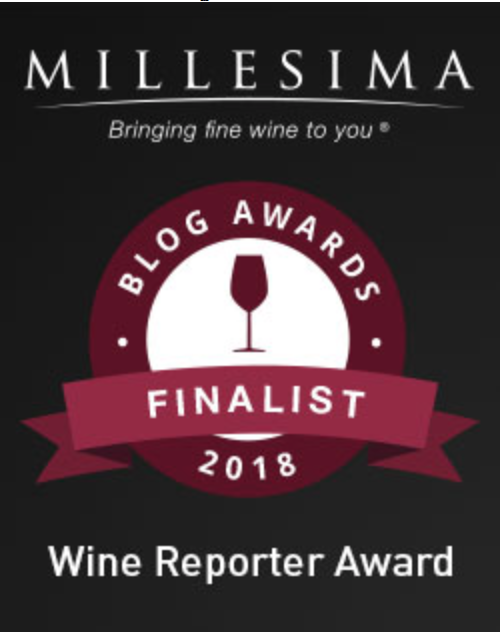There are a few areas about which I am utterly clueless:
How to find the time to write more (and better);
How to play Cricket;
How it is possible to keep your pants up if you wear them mid-thigh, exposing your boxers.
A couple of those I actually desire to learn a bit more about (I will let you guess which of the three I have no plans to explore any further).
Another area about which I know very little: what effect does soil have on wine–can you actually taste the soil elements in the wine?
This is not an(other) article about Terroir (I italicize it so that you will imagine me saying it in my pretentious French accent), which is a term usually used in to describe a wine’s “sense of place.” While soil type is definitely a large component of the concept of Terroir, it is certainly not the only element. Perhaps I will try and tackle Terroir one of these days, but that won’t be today. Today, I only want to focus on soil, or more precisely, do soils affect the taste of the wine?
There seems to be a bit of debate on what (if any) impact type of soil has on the taste of wine, but there seems to be some consensus that soil can affect wine in at least a few ways: First, the chemical makeup of the soil can stimulate (or retard) the development of the vine. Second, different soils have differing levels of water retention, which plays a huge role in the vigor of the plant. Last, the type of soil can impact both diseases and pests that may affect the health of the vines. Thus the chemical, physical, and biological composition of the soil all play a part in the making of a wine.
But can you taste it?
Wine geeks talk about “minerality” in wine as if the vines had sucked up all the peculiarities of the specific soil and regurgitated the best elements into the grape. Once vinified, this produces “mineral,” “flinty,” or my favorite “brushed rock” elements in the final product (Who brushes rocks?—I don’t even brush my hair). On the other hand, many geologists and viticulturists have researched the effect of soil on wine and they have come back with a near unanimous response–the elements of a particular soil are not transported by the vine, into the fruit, and eventually into the wine.
In other words, “poppycock” (a word that I love and that is far underutilized).
A few scientists have posited that the reason for the “mineral” aspect of many wines is not due to the chemical makeup of the soil, but rather its physical properties. Specifically, well draining soils (which are frequently composed of various types of rock, chalk, and volcanic ash) tend to be the best soils in which to plant grape vines. Since there is not much moisture retained in the soil, the vine struggles in its constant search for water. The stress associated with that search that leads to the creation of the different flavors in the wine (including “minerality”).
Thus, in short hand, the “minerality” that we wine geeks love does not seem to come from the minerals in the soil at all, but rather from the fact that the soil where the vines were planted could not hold their liquor, er water.
But does that even matter? If you like “minerality” in your wine, does it make a difference how (or why) it gets there?
I was recently sent some wines that were made from vines planted in volcanic soils by the Protocol Wine Studio, who has a unique (as far as I can tell) wine club, Le Metro. Every month, they group together six wines around a particular theme and/or region. These wines are delivered to you along with their very informative “Winezine” which gives a general overview of the theme as well as in-depth information about each wine. Starting this month, they will also include the fabulous illustrations of the multi-talented Elaine Chukan Brown of Hawk Wakawaka Wine Reviews. This “club”is a great choice for those who host a monthly wine tasting group (or those who are thinking about starting one), or those who are interested in trying interesting wines that you will have difficulty finding anywhere else.
It was a virtual tasting, beginning at 9:00 Eastern time, on a Tuesday.
Yikes.
I was to open five bottles of wine on a Tuesday night? I have very little experience “saving” a bottle of wine (I mean, come on, the bottle has been sacrificed already, it would be cruel to keep it “alive”). Thus, I needed some help. So, I contacted a few neighbors and friends and turned it into our third flash wine tasting out on our front stoop.
2010 Villa Dora Vigna del Vulcano: Retail $15-20. 80% Coda di Volpe, 20% Falanghina. A closed floral nose, round and rich on the palate with a hint of sweetness and tropical flavors of pineapple and grapefruit. and a flinty finish. A food pairing here is tough since there is not a lot of acidity. Good to Very Good. 86-88 Points.
2011 Passopisciaro Guardiola: Retail $30. 100% Chardonnay. Another closed nose, really not much there. Much more acidity with subtle flavors of lemon and grass. Not your typical weight for a chard, but there is that flinty finish again. A better food pairing here. Very Good. 87-89 Points.
While I certainly liked both of these whites, I have to take a brief time-out here to stress that I have yet to find an Italian white wine that I can go a bit Gaga over (yeah, I would even consider wearing a meat suit if I found such a wine). Truth be told, there was one wine that I really liked (the Jermann “Were Dreams” Chardonnay)—but only one….
2011 La Sibilla Piedirosso: Retail $20. 100% Piedirosso. A little barnyard and raspberry on the nose and some definite earth. The dried raspberry persists on the palate with plenty of acidity. A bit austere and chalky, but this would go rather well with some roast chicken or even a bit of carbonara. Very Good. 87-89 Points.
2011 Tenuta di Fessina Erse: Retail $30-35. 80% Nerello Mascalese, 20% Nerello Cappuccio. Lighter in color—almost Beaujolais-esque. A fruity nose of raspberry and strawberry and the slightest hint of earth and black cherry Kool-Aid. Full and rich on the palate with flavors that persist for a while. This is flat out good. Really good, but still a pup—a ways to go here. Outstanding. 90-92 Points or more.
2010 Girolamo Russo A Rina: Retail $20-25. 95% Nerello Mascalese, 5% Nerello Cappuccio. A tad darker than the others with a bit of nuttiness on the nose that tries to hide the watermelon and dark cherry behind. The palate is met with some great fruit up front, followed by some depth and nice complexity. I thought the previous wine rocked, but this is up another level. Outstanding. 92-94 Points.










I think it would be easier for me to make a list of the things I’m clued up about than the reverse. The more I know the more I realise how little I know and how unlikely it would ever be that I could know as much as I would like to.
Lovely post. 🙂
LikeLike
Yeah, it is especially hard when you don’t know what you don’t know…
LikeLike
Which is most of the time 🙂 for me at least.
LikeLike
Fun topic! I don’t know if anyone will be able to nail down exactly why certain environment features bring out particular aspects in a wine. I do know I like the flavor aspects I identify as “mineral”. Looks like you have some nice neighbors!
LikeLike
I like “mineral” too, but who are we kidding? We would drink wine no matter what…
LikeLike
There you go…
LikeLike
😉
LikeLike
I played Cricket once with some Brits. The first pitched was rolled at me. I thought “Who swings at a ball in the dirt? Not this chick!” And the ball hit the wicket and I was out. That wasn’t embarrassing at all. Nope. That said, I have tasted some wines where I thought “dirt” was the primary flavor. I’m sure it’s not related to the fact that I drink boxed wine.
LikeLike
It is an utterly confusing game. I have tried to watch, really, but in the end I got nothing out of it at all.
LikeLike
“..about which I am utterly clueless.” Good God, now you have completely redirected my focus for the day. 🙂 I’ve always thought I would make a good contestant on the game show, Jeopardy. Yet in the back of my mind, I knew the category Shakespeare would come up and I’d just die! But I digress… Virtual tastings: delightful idea. How does one blogger sign up?
LikeLike
A friend of mine was actually a three time winner on Jeopardy—that’s when I knew I was not destined to ever try. If I did worse than she, I would never hear the end of it.
LikeLike
“A couple of those I actually desire to learn a bit more about (I will let you guess which of the three I have no plans to explore any further).”
Come on! You should really give cricket a try! 🙂
Actually, I was wondering if you told your flash mob tasters what the common thread of the wines was supposed to be before tasting or if you waited to see if they could pick it out for themselves?
LikeLike
I told them about the theme—they are not the brightest bunch…. I kid, I kid….
LikeLike
I’ve honestly never had an Italian gavi that I didn’t love. But maybe that says more about my taste in wine…
LikeLike
I should certainly try more Gavi…
LikeLike
Poppycock . . . that would be a great name for a wine bar! I’m still not convinced I’ve ever TRULY tasted terroir (that I could distinguish, anyway) , but as long as you SAY you can taste it, you can taste it . . . right? BTW, I stood in line behind one of those thigh-pants people at the bank yesterday. I was trying desperately to take an inconspicuous photo with my phone, but he didn’t look like the good-sport type, so I gave up. Salud!!
LikeLike
I saw a guy the other day who literally had his pants buckled at just above the knee—I was a not sure if I was more amazed that they stayed up or how he was able to actually walk….
LikeLike